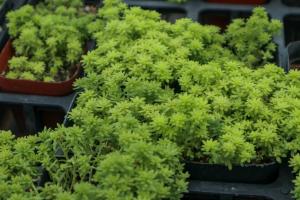Introduction
Water uptake by plant root cells is essential for plant growth and survival. It is a complex process that involves the movement of water across various cell membranes, and any disruption to these processes can inhibit plant growth. In this article, we explore some of the key factors that can enhance water uptake by plant root cells.
Soil characteristics
The soil is the primary source of water for plant roots. The quality and characteristics of the soil can greatly affect water uptake by plant root cells. Soil texture is one such factor; sandy soils drain water quickly, increasing the likelihood of water stress, while clay soils retain water well, but also retain excess water, leading to root rot. Soil fertility is another factor; nutrient-rich soils can promote root growth and water uptake. Soil pH can also play a role, as extreme pH levels can inhibit root growth and nutrient uptake, thereby limiting water uptake.
Root architecture
The architecture of a plant's root system plays a vital role in water uptake. A deep and extensive root system can access soil water reserves at depth, while a shallow root system may struggle to access water during periods of drought. Additionally, roots with a higher surface area to volume ratio can maximize water uptake, with root hairs being particularly important in this regard. In some cases, manipulating root architecture through breeding or genetic engineering can enhance water uptake in plants.
Transpiration and stomatal regulation
Transpiration is the process by which water moves from the roots through the plant and is released into the atmosphere through pores called stomata. Stomata are typically located on the leaves, and their opening and closing are regulated by a complex interplay of environmental and internal factors. By regulating stomatal aperture, plants can control water loss and maximize water-use efficiency. Some approaches to enhancing water uptake by plant root cells involve manipulating stomatal regulation, such as by engineering plants with improved drought tolerance.
Mechanisms of water uptake
There are several mechanisms by which water can be taken up by plant root cells. These include passive uptake via osmosis, facilitated uptake through aquaporins, and active transport using ion channels and pumps. By understanding these mechanisms in more detail, researchers can identify potential targets for improving water uptake in plants. For example, engineering plants with more efficient water channel proteins or ion transporters could lead to increased water uptake and improved drought tolerance.
Conclusion
Water uptake by plant root cells is a complex process that can be influenced by numerous environmental and genetic factors. In order to enhance water uptake, it is important to consider all of these factors and look for creative solutions that work for different plant species and growing conditions. By continually improving our understanding of the mechanisms of water uptake, we can develop new strategies for improving water-use efficiency in plants and enhancing their ability to survive in challenging environments.

 how many times do yo...
how many times do yo... how many planted tre...
how many planted tre... how many pine trees ...
how many pine trees ... how many pecan trees...
how many pecan trees... how many plants comp...
how many plants comp... how many plants can ...
how many plants can ... how many plants and ...
how many plants and ... how many pepper plan...
how many pepper plan...






























